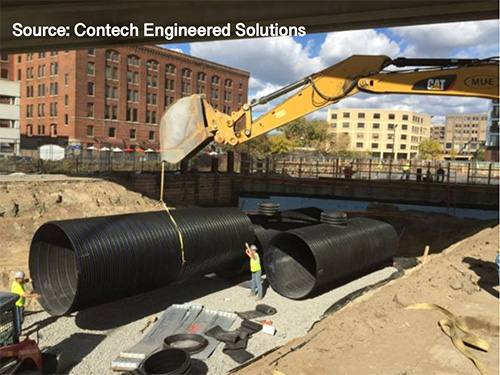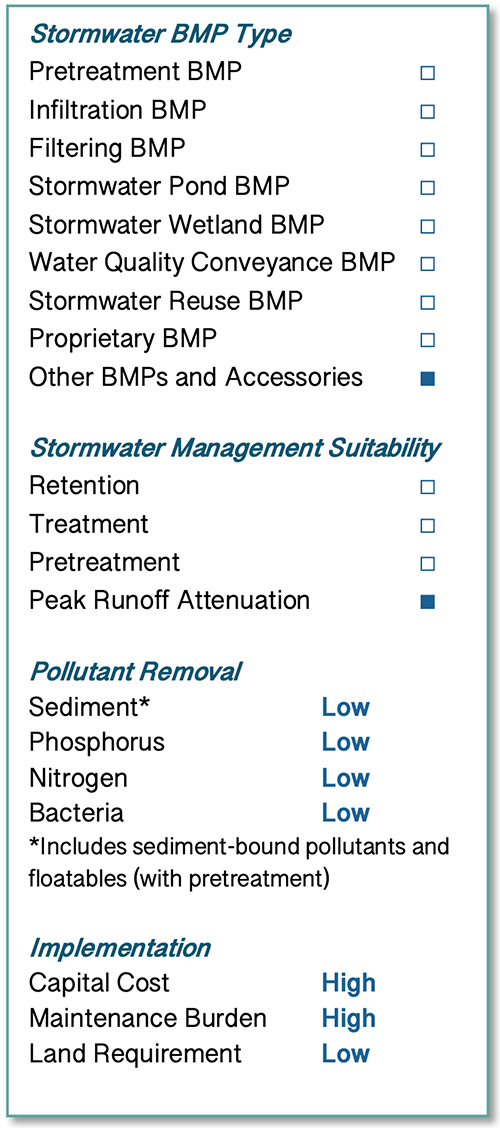Underground detention facilities are subsurface storage structures designed to temporarily store stormwater runoff and release it slowly at pre-development peak flow rates. Like aboveground dry detention basins, underground detention facilities are designed to drain completely between storm events, thereby providing storage capacity for subsequent events. Underground detention facilities are typically designed as on-line systems to attenuate peak flow rates. They provide little, if any, pollutant removal (i.e., settling of coarse sediment) and are susceptible to re-suspension of sediment during subsequent storms. They are not designed to provide infiltration and therefore cannot be used to meet the Standard 1 retention performance criterion of this Manual.
Underground detention systems are typically used at sites where land availability or land costs preclude the use of surface stormwater detention system. They are often used below parking lots, roads, and other paved areas. Underground detention structures are typically made of concrete (vaults or tanks), large diameter solid pipes, enclosed arches made of plastic, steel, or metal (aluminized steel, aluminum, and others), or other modular systems.
The underground structures described in the Underground Infiltration System section of this chapter can also be used as detention facilities if they are fully enclosed or used with a liner to prevent infiltration or interaction with groundwater. Open-bottom underground structures or perforated pipe should be designed as underground infiltration systems in accordance with the guidance provided in Chapter 10 and the Underground Infiltration System section of this chapter.

